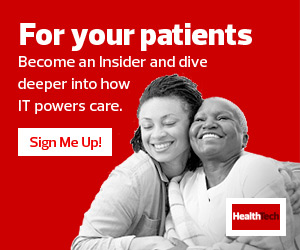How Do Clinical Decision Support Systems Work?
At its core, clinical decision support is about helping clinicians and the patients they care for, says Saif Khairat, an associate professor of health informatics and health services research at the University of North Carolina at Chapel Hill. The most common uses for decision support are medical diagnosis, care alerts and reminders, medication management and chronic disease management.
“It’s a health IT solution that provides clinicians or patients with person-specific information and intelligence to offer recommendations in a timely fashion that improve care outcomes and reduce medical or medication errors,” he says.
Broadly speaking, clinical decision support systems are classified as either knowledge-based or non-knowledge-based.
Knowledge-based systems rely on a series of rules, written as if-then statements, to look at the patient data (the system’s input) and generate a recommended action (the output). These comprise the majority of clinical decision support systems — and the transparency of rules helps to drive adoption, Phillips says: “Clinical teams understand the data that’s going in and the rules that are generating the alerts.”
Non-knowledge-based systems also evaluate data, but these systems use artificial intelligence algorithms or statistical pattern recognition to generate recommendations. These systems are less widespread; as Pew Research points out, they are subject to strict regulatory requirements from the U.S. Food and Drug Administration for medical products that use AI to drive medical decision-making.
RELATED: Learn how AI helps healthcare organizations reduce avoidable patient harm.
How Are Clinical Decision Support Systems Used?
One of the first clinical decision support systems ever developed, known as MYCIN, was a rules-based diagnostic tool developed in the early 1970s. As described in the British Columbia Medical Journal, physicians would manually enter patient data, from medical history and vital signs to lab results, and MYCIN would run the data against approximately 600 rules to diagnose an infectious disease and recommend the right antibiotic. MYCIN was used for research at Stanford Medical School but never made it into clinical practice, in part because it took more than 30 minutes to enter patient data.
Today’s tools are able to collect and analyze data in real time, with use cases and benefits in a variety of care settings.
For care at home, clinical decision support systems can provide a “tap-on-the-shoulder notification” based on data about medication adherence or vital signs gathered from remote monitoring devices, Phillips says.
In primary care, clinics may use decision support tools to facilitate conversations and interventions in areas such as cardiovascular disease prevention. Here, physicians may receive reminders to screen for common risk factors, log cases of high cholesterol or high blood pressure, recommend lifestyle changes, and discuss medication or other treatment protocols.
For general care within the hospital, clinical teams may monitor a patient recovering from surgery for, say, their reaction to pain medication. Or, at discharge, nursing staff may receive an alert that a patient is a high risk for hospital readmission based on certain clinical or nonclinical factors; this may prompt additional interventions or referrals for follow-up care before a patient is sent home.
In intensive care, where patients are under continuous monitoring, clinical decision support systems are set up to identify changes in heartbeat or breathing that may signal a sudden change in a patient’s condition. “Patients depend on technology for their survival. There are a lot of devices caring for the patient,” Phillips says. “To give frontline caregivers more efficient guidance, we use technology to help them identify which patients are deteriorating.”
Clinical decision support is of greater value in high-acuity settings, when clinical staff must make decisions quickly, Khairat says. But this can come at a cost. Phillips notes that the average patient in the ICU generates 350 alarms over a 24-hour period, while research from Khariat and his colleagues concluded that most ICU physicians experience alert or alarm fatigue within just 22 minutes of using the EMR system.
“We have to create more insightful notifications to reduce alarm fatigue,” Phillips says. “We have to send alerts seamlessly to end users in the way they want to be notified.”
Click the banner below to discover the top health tech trends for 2022.













